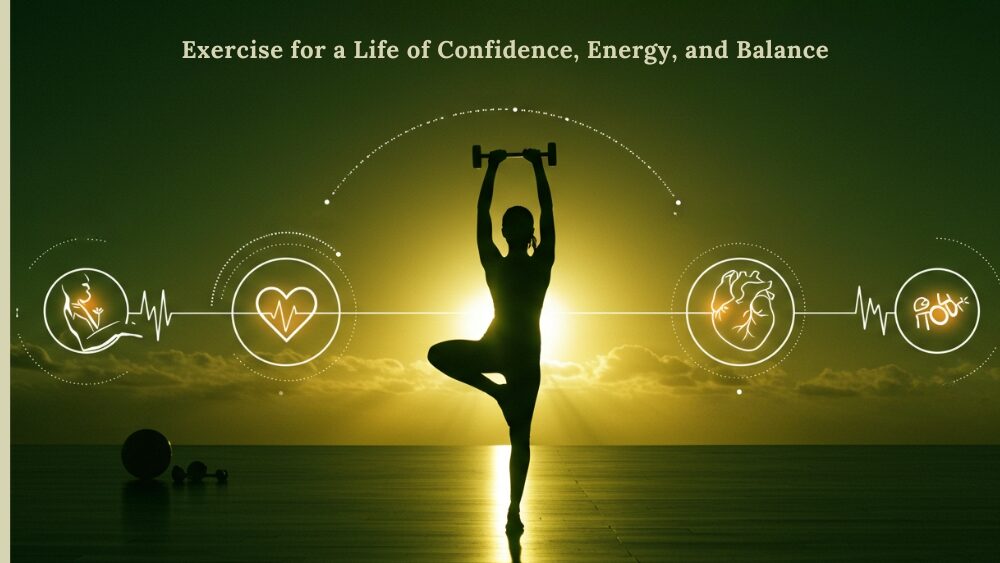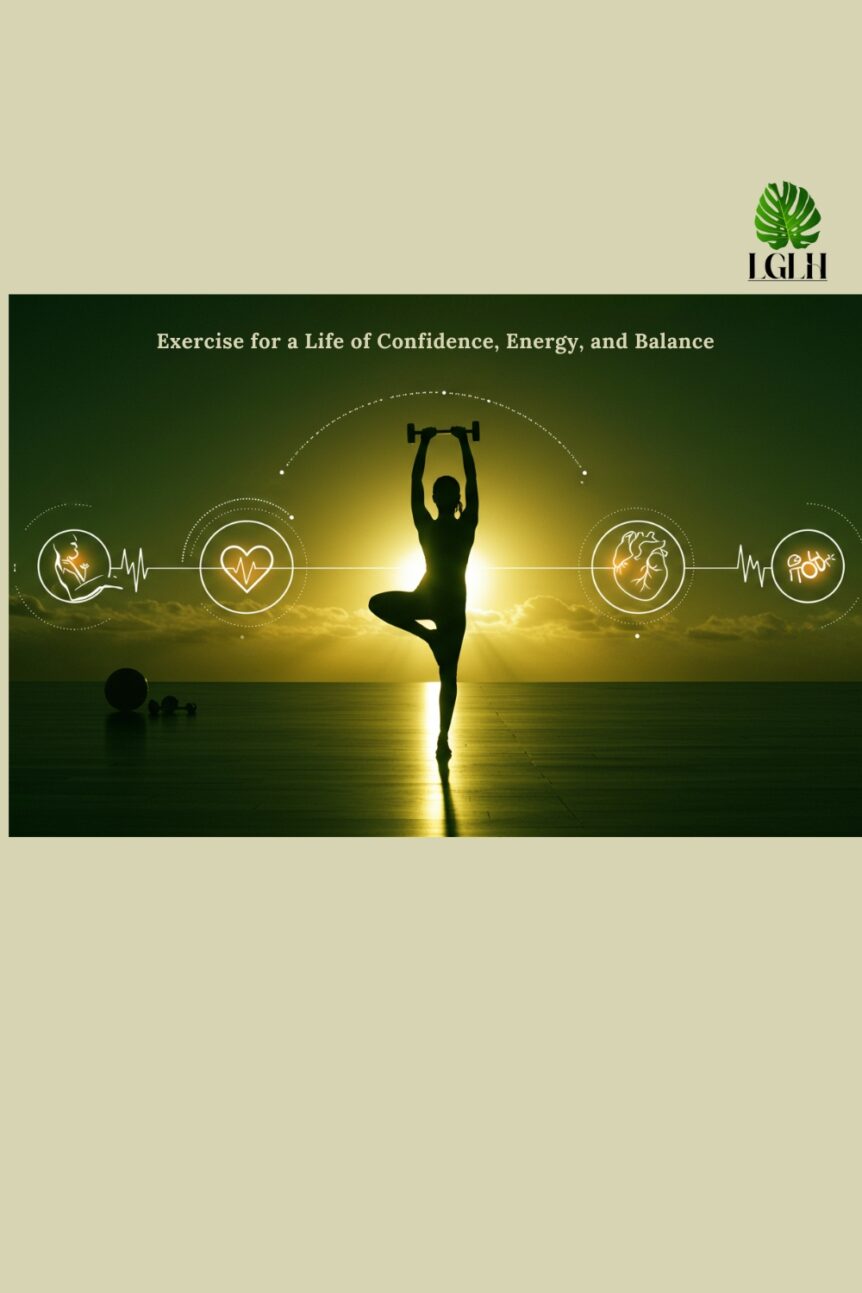At LGLH Bags, we believe true confidence comes from within. It’s not just about how you look—it’s about how you feel, and how well you nurture your body, mind, and spirit. Exercise is one of the most effective ways to elevate all aspects of your life, giving you more energy, better health, and a deeper sense of self-assurance.
We know that life can be busy, and prioritizing health often feels like an added burden. But the truth is, exercise doesn’t have to be a time-consuming or overwhelming task. When approached holistically, exercise can become an empowering practice that aligns with your personal goals and values, enhancing every part of your life.
1. Exercise Boosts Confidence
The connection between physical health and confidence is undeniable. Exercise improves how you feel about yourself—not just physically but also mentally and emotionally. When you work out, your body releases endorphins, which are natural mood boosters. This sense of accomplishment can help you feel more confident, inside and out.
The Science: Regular physical activity triggers the release of endorphins, which reduce stress and anxiety, while improving your mood and sense of well-being. Studies show that people who engage in regular exercise report higher levels of self-esteem and a better body image, regardless of changes in weight.
Types of Exercise for Confidence:
- Strength Training: Lifting weights or doing bodyweight exercises helps build physical strength, which can translate into a greater sense of inner strength and confidence.
- Cardio: Activities like running, swimming, or cycling increase heart rate, which boosts mood and energy levels, leaving you feeling more empowered.
2. Exercise Increases Energy Levels
Exercise may seem like it would leave you more tired, but in reality, regular physical activity increases your energy levels and combats feelings of fatigue. The more active you are, the more energy you’ll have to tackle your day-to-day tasks.
The Science: Exercise improves circulation, helping oxygen and nutrients reach your muscles and organs more efficiently. This leads to better stamina, less fatigue, and greater overall vitality. Regular physical activity also improves sleep quality, which in turn boosts your energy levels during the day.
Types of Exercise for Energy:
- Cardio: Running, dancing, cycling, or aerobics help increase your heart rate and energize your body.
- Stretching: Gentle stretching or yoga in the morning can increase blood flow and kickstart your day with more vitality.
3. Mental Health and Stress Relief Through Exercise
In today’s fast-paced world, mental health is just as important as physical health. Exercise has been proven to have a significant impact on mental well-being, reducing symptoms of stress, anxiety, and depression.
The Science: Physical activity boosts the production of neurotransmitters like serotonin and dopamine, which are linked to positive moods. Studies show that even low to moderate exercise can reduce feelings of anxiety and depression. Exercise also helps regulate the body’s stress response, lowering levels of cortisol (the stress hormone).
Types of Mental Exercises:
- Mindfulness Meditation: Practicing mindfulness exercises, such as focused breathing or body scans, can help reduce stress and improve mental clarity. Pairing this with physical exercise enhances both physical and mental health.
- Yoga: Combining physical postures with mindfulness and breathwork, yoga is a powerful practice for managing stress and cultivating a calm, focused mind.
4. Physical Health: Prevention and Longevity
Regular physical activity is essential for long-term health. It strengthens your heart, improves circulation, and helps reduce the risk of chronic diseases such as diabetes, heart disease, and hypertension. Exercise also improves bone density, muscle mass, and flexibility, which are essential for healthy aging.
The Science: According to the CDC, adults who engage in regular physical activity are at a lower risk of developing conditions like obesity, cardiovascular disease, and diabetes. Exercise also contributes to longevity, with studies showing that people who are physically active tend to live longer, healthier lives.
Types of Physical Exercise for Health:
- Strength Training: Weight-bearing exercises like squats, lunges, and deadlifts help improve bone density and muscle mass.
- Walking or Jogging: Simple, accessible exercises that boost cardiovascular health and maintain mobility.
- Swimming: A low-impact, full-body workout that builds endurance and strength while being gentle on the joints.
5. Breathing Exercises: For Clarity and Calm
Breathing exercises are often overlooked, but they are one of the most effective ways to improve both physical and mental well-being. Focusing on your breath can help you manage stress, improve focus, and boost energy.
The Science: Deep, controlled breathing increases oxygen flow to the brain and promotes relaxation. It has been shown to reduce cortisol levels, lower blood pressure, and improve mental clarity. Controlled breathing practices can even improve lung capacity and help reduce anxiety and depression.
Types of Breathing Exercises:
- Box Breathing: Inhale for four seconds, hold for four seconds, exhale for four seconds, hold for four seconds, and repeat. This method can calm the nervous system and improve focus.
- 4-7-8 Breathing: Inhale for four seconds, hold your breath for seven seconds, and exhale for eight seconds. This breathing technique is excellent for reducing anxiety and promoting relaxation.
- Diaphragmatic Breathing: Focusing on breathing deeply into your belly rather than shallow chest breaths helps activate the parasympathetic nervous system, reducing stress and enhancing mental clarity.
6. Spiritual Exercise: Connecting Mind, Body, and Spirit
Spiritual exercise might sound abstract, but it’s about creating harmony between your mind, body, and spirit. Practices that nurture the soul can deeply impact your overall health, improving mental clarity, emotional balance, and your connection to the world around you.
The Science: Research shows that spiritual practices, including mindfulness, prayer, and meditation, contribute to reduced stress, lower blood pressure, and enhanced emotional well-being. These practices activate areas of the brain associated with peace and happiness, improving resilience and coping skills.
Types of Spiritual Exercise:
- Meditation: Guided or silent meditation allows you to disconnect from stress and reconnect with your inner peace. Focusing on your breath or a specific intention can help clear your mind.
- Yoga and Tai Chi: These practices combine physical movement with mindfulness, fostering both physical and spiritual well-being. They enhance flexibility, strength, and a deep sense of calm.
- Gratitude Practices: Incorporating a daily gratitude practice—whether through journaling or simply reflecting on what you’re grateful for—helps cultivate a sense of peace and spiritual connection.
Conclusion: Exercise for a Life of Confidence, Energy, and Balance

Exercise is about more than just improving your body—it’s about enhancing your entire life. A holistic approach to exercise—one that includes physical activity, mental exercises, breathing practices, and spiritual growth—can transform your health, boost your confidence, and give you the energy to live life to the fullest.
Whether it’s a yoga session to calm your mind, a quick jog to energize your body, or a few minutes of deep breathing to center your spirit, every type of exercise contributes to a healthier, more balanced you.
Make this year the one where you prioritize your well-being—not just for the physical benefits, but for the mental and spiritual peace it brings. Your health is your greatest asset, and when you nurture it with intention and care, you unlock a future filled with vitality, confidence, and joy.
What types of exercise make you feel your best? Share your favorite practices or any questions you may have in the comments below—we’re all in this journey together!

